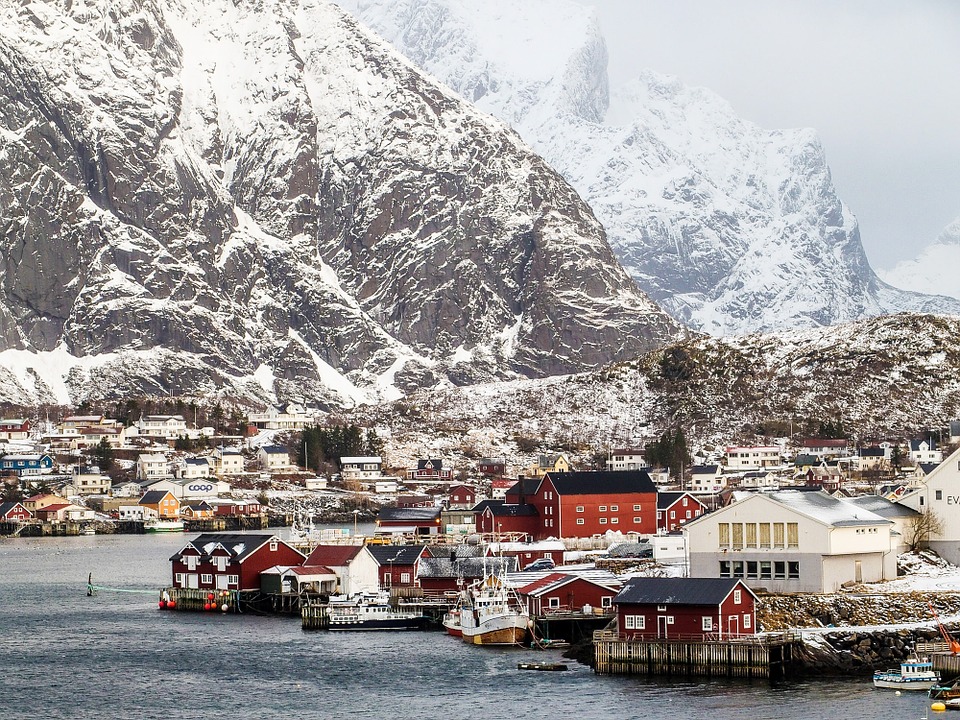The Organisation for Economic Co-operation and Development (OECD) study, published today on the NSPA, affirms that rural areas make an important contribution to growth and productivity in the EU

The Northern Sparsely Populated Areas (NSPA) is a network of 14 regions in the north of Europe. It is an example of the potential of rural areas making an important contribution to national growth and productivity. Investment in our regions is to the benefit of the regions, countries and, not least, the EU as a whole - this strong message from the OECD is presented today at the launch of the territorial review of all 14 NSPA regions.
The sparsely populated areas of Finland, Norway and Sweden are becoming increasingly important to the geopolitical and economic interests of these countries and the European Union. These regions in northern Europe are linked by a set of common characteristics, which are absent in other European regions, and are recognized in key national and EU policy frameworks. EU funding targeted to these regions has promoted development and structural adjustment of regions with extremely low population densities.
The new study, “OECD Territorial review. Northern Sparsely Populated Areas”, is the product of two years of research and joint discussion between the OECD and the NSPA region. It sets policy recommendations at cross-border, national and regional scale to enhance prosperity and wellbeing across the NSPA. In a document published in September 2016, the “Regional Outlook on development in sparsely-populated areas and low-density economies”, the OECD concluded that low-density (rural) areas are places of unique opportunity. Both studies highlight the linkages between urban and rural policies and the need for countries to rethink rural development to better tap the productivity growth potential of all rural regions.
The Northern Sparsely Populated Areas (NSPA) of Finland, Norway and Sweden have an important economic role within Europe. In order to reach their potential, future growth will need to come from increasing productivity and lifting workforce participation. The OECD Territorial Review of the NSPA finds that can be achieved by these regions implementing smart specialization strategies, improving infrastructure and connectivity, and promoting service delivery innovation and extending broadband, concluded Mari Kiviniemi, Deputy Secretary-General, OECD, Paris. The OECD/NSPA study shows the challenges and opportunities of the NSPA regions, and how the NSPA together
can create a common critical mass to truly strengthen the development opportunities in the European frontline, both geographically as a part of the European Arctic, and in creating development. The OECD policy recommendations for the NSPA regions include the importance of improving infrastructure for connectivity; the need to focus scarce economic development resources in areas of absolute advantage; and accounting for the higher unit costs of delivering public services (due to remoteness, low population densities, and the harsh climate).
The OECD report delivers support for increased partnership on regional, NSPA, national and EU level for adapted strategies and support to release the regional potentials, including investments in infrastructure, broadband, smart regional specialization and innovation. We look forward to now put this for us important study in practice in cooperation with our partners on all levels, says Erik Bergkvist, chair of Region Västerbotten and Europa Forum Northern Sweden.
The study also sends a clear message to the national governments and the EU to continue to ensure that the unique characteristics of the NSPA regions (a harsh climate, long distances from markets, and a small number of isolated settlements) are effectively incorporated into national and European level policy settings for regional and rural development, and service delivery.
This extensive Territorial Review provides evidence for the development of a place-based strategy, which can help realize the growth opportunities in the region. The NSPA regions account for 20 % of Finland's economy, 9 % in Sweden and 7 % in Norway, which is significant for the Arctic and the EU as a whole. Cross-border collaboration between NSPA and other EU regions and cities will help build up the needed human capital, skills, innovation and infrastructure, stated Markku Markula, President of the European Committee of the Regions, Brussels.
The regions are committed to investing and delivering on these policy recommendations with a strong and proactive leadership in their regions, in joint actions within the NSPA, calling for a strong and close partnership with the EU and national governments to unleash the potentials that exist. It is not only possible, it is a necessity to invest in those regions to the benefit of the countries and, not least, the EU as a whole.
Satu Vehreävesa, Chairwoman of NSPA highlighted, the OECD study shows clearly, that NSPA region is not only a target for support, but we also bring a significant added value for the European economic growth and development.
The Northern Sparsely Populated Areas, NSPA, is a network which consists of 14 regions of the northern Sweden, eastern and northern Finland as well as Northern Norway. These regions share many circumstances such as long distances, a sparse population and harsh climate. Within the EU, the NSPA regions have unique geographical features and are more similar to rural regions in countries such as Australia and Canada. The NSPA has a total population of 2.6 million over an area of 532 000 square kilometers. This is comparable to the population of Rome living in the entire area of Spain. The regions of NSPA are located in the periphery of Europe and are part of the passage to the Artic and eastern Russia. The climate change, access hydrocarbon, mineral resources and the altered relations with Russia are changing the economic and political environment. Therefore, the role of NSPA is becoming increasingly important to the economic and geopolitical interests of these regions and the EU.
